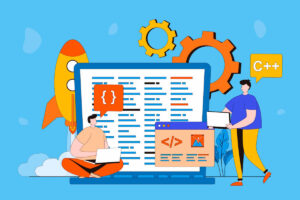Are you a web developer looking to enhance your skills and knowledge in PHP and MySQL? In today’s digital world, the combination of these two technologies is crucial for building dynamic and interactive websites. Let’s dive deeper into the benefits of marrying PHP and MySQL, and provide you with valuable insights on how to leverage these powerful tools effectively.
Understanding PHP and MySQL
What is PHP?
PHP, which stands for Hypertext Preprocessor, is a server-side scripting language that is widely used for web development. It is a versatile language that allows developers to create dynamic web pages, interact with databases, and perform various tasks on the server side. PHP is open source and supported by a large community of developers, making it easy to find resources and support online.
Some key features of PHP include:
– Ability to embed within HTML
– Supports various databases
– Object-oriented programming support
What is MySQL?
MySQL is an open-source relational database management system that is widely used for storing and retrieving data. It is a powerful tool for managing databases and is known for its speed, reliability, and ease of use. MySQL is compatible with various operating systems and can be integrated seamlessly with PHP to create dynamic and data-driven websites.
Some key features of MySQL include:
– ACID compliance
– Triggers and stored procedures support
– Replication and clustering capabilities
Benefits of Marrying PHP & MySQL
Seamless Integration
One of the key benefits of marrying PHP and MySQL is the seamless integration between the two technologies. PHP and MySQL are designed to work together, making it easy for developers to create dynamic web applications that interact with databases. By using PHP to send queries to MySQL databases, developers can retrieve, store, and manipulate data easily.
Improved Performance
When PHP and MySQL are used together, web applications can achieve improved performance and speed. MySQL is known for its fast query processing capabilities, while PHP allows developers to write efficient code that interacts with the database. By optimizing database queries and using best practices in PHP development, developers can create high-performance web applications that deliver a seamless user experience.
Scalability and Flexibility
Another advantage of marrying PHP and MySQL is the scalability and flexibility it offers to web developers. MySQL is a scalable database management system that can handle large volumes of data, making it ideal for web applications that need to scale over time. By using PHP to create dynamic and customizable web interfaces, developers can build flexible web applications that can adapt to changing requirements and user needs.
Best Practices for Using PHP & MySQL
Use Prepared Statements
Prepared statements are a best practice for interacting with MySQL databases in PHP. By using prepared statements, developers can prevent SQL injection attacks and improve the security of their web applications. Prepared statements also help optimize query performance by reducing the overhead of query parsing and execution.
Normalize Database Tables
When designing database schemas in MySQL, it is important to normalize the tables to reduce redundancy and improve data integrity. By breaking down data into separate tables and establishing relationships between them, developers can create efficient and organized databases that are easy to manage and query.
Implement Indexing
Indexing is essential for optimizing query performance in MySQL databases. By creating indexes on columns that are frequently queried, developers can speed up data retrieval and improve the overall performance of their web applications. It is important to carefully consider the columns that need to be indexed and avoid over-indexing, which can lead to decreased performance.
Conclusion
Marrying PHP and MySQL is a powerful combination that can help web developers create dynamic, interactive, and data-driven websites. By leveraging the seamless integration, improved performance, and scalability of these technologies, developers can build web applications that deliver a superior user experience. By following best practices such as using prepared statements, normalizing database tables, and implementing indexing, developers can optimize their code and database design for maximum efficiency and security. Whether you are a seasoned developer or just starting out, mastering PHP and MySQL is essential for building cutting-edge web applications in today’s digital landscape.
Ready to take your web development skills to the next level? Let our team of experts help you get started with PHP and MySQL. Contact us today for a free consultation!
FAQs:
What is PHP?
PHP, which stands for Hypertext Preprocessor, is a server-side scripting language that is widely used for web development. It allows developers to create dynamic web pages, interact with databases, and perform tasks on the server side.
What is MySQL?
MySQL is an open-source relational database management system used for storing and retrieving data. It is known for its speed, reliability, and ease of use, making it a powerful tool for managing databases.
What are the benefits of marrying PHP and MySQL?
One benefit is the seamless integration between the two technologies, allowing for easy creation of dynamic web applications. Another benefit is improved performance, as MySQL’s fast query processing capabilities combined with efficient PHP code can enhance speed. Additionally, the scalability and flexibility offered by MySQL and PHP allow for building customizable web interfaces and handling large volumes of data.
How can PHP and MySQL be leveraged effectively by web developers?
Web developers can leverage PHP to send queries to MySQL databases, retrieve, store, and manipulate data easily. By optimizing database queries and using best practices in PHP development, developers can create high-performance web applications that deliver a seamless user experience.












+ There are no comments
Add yours